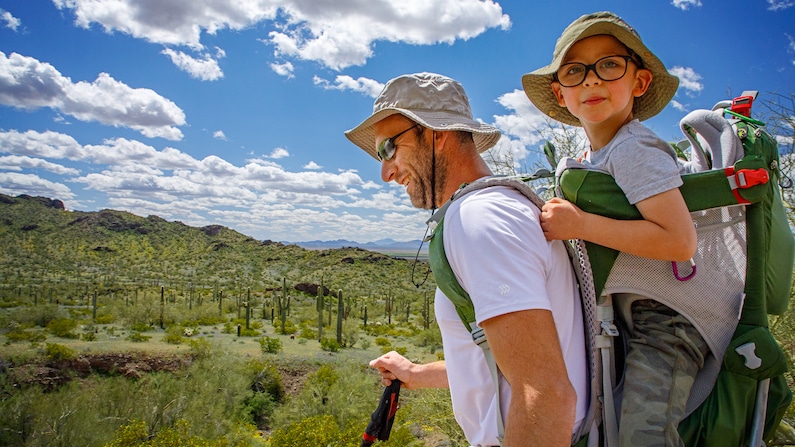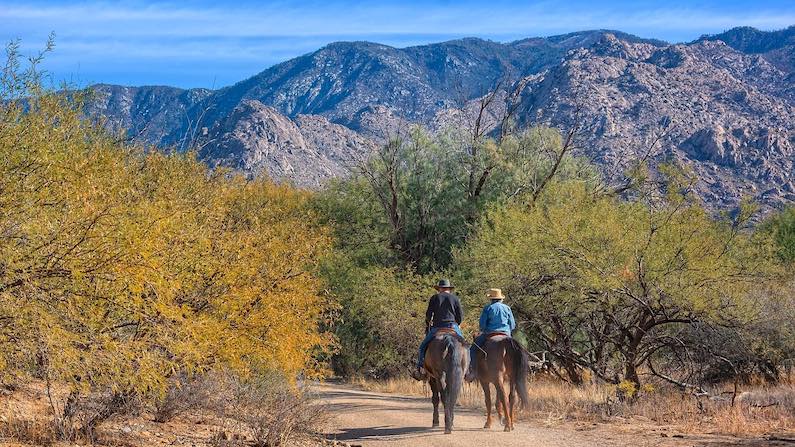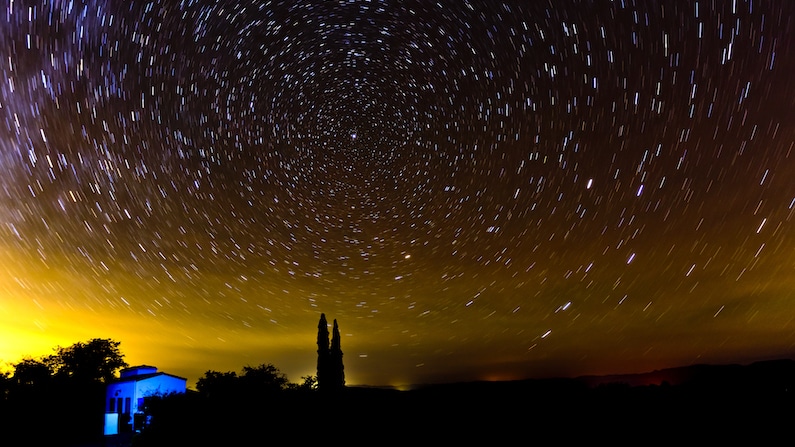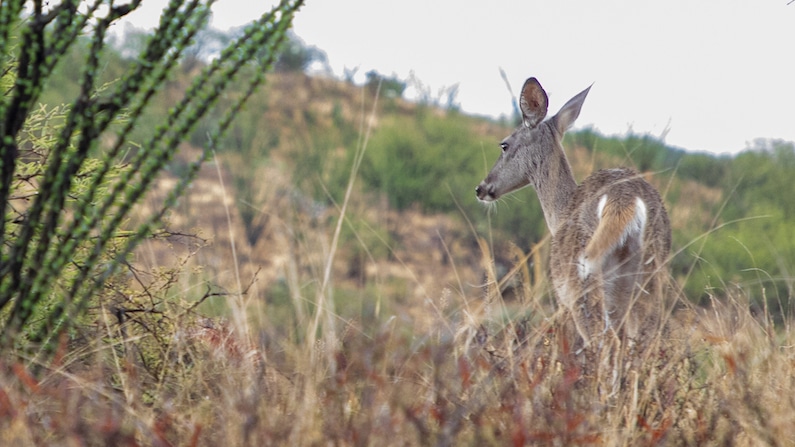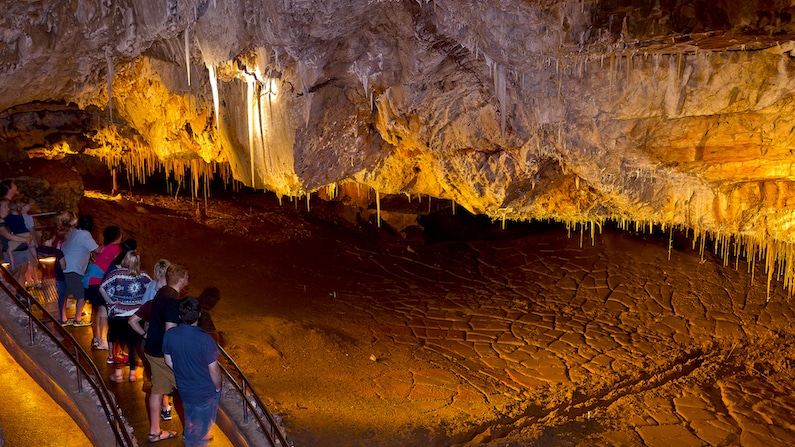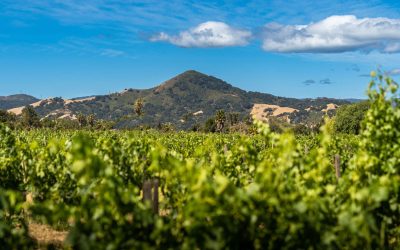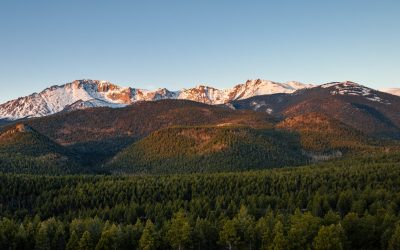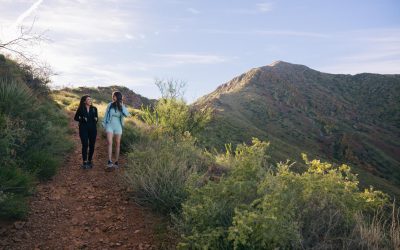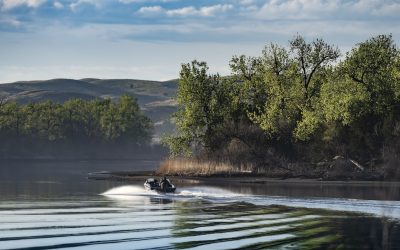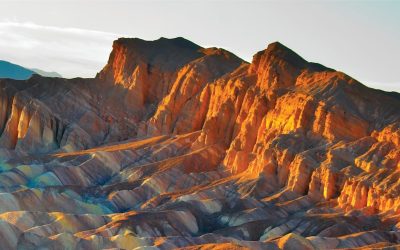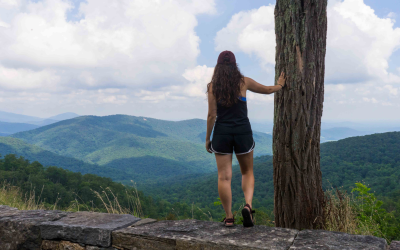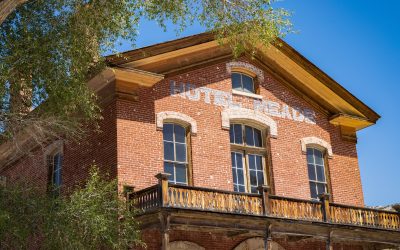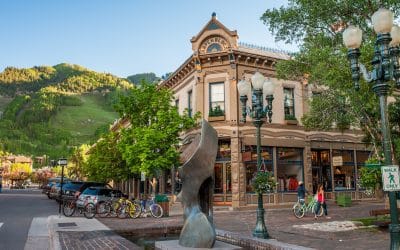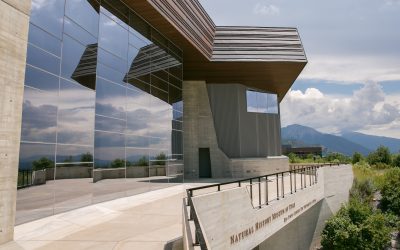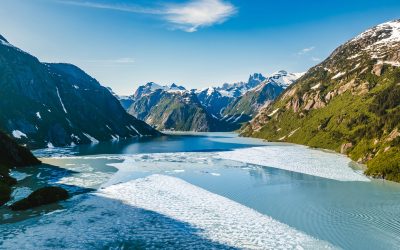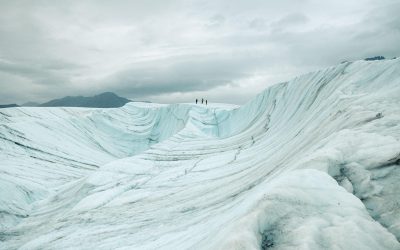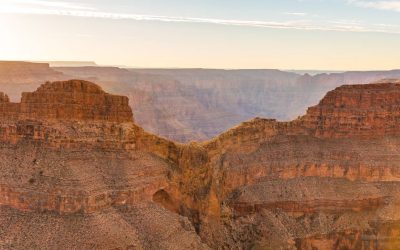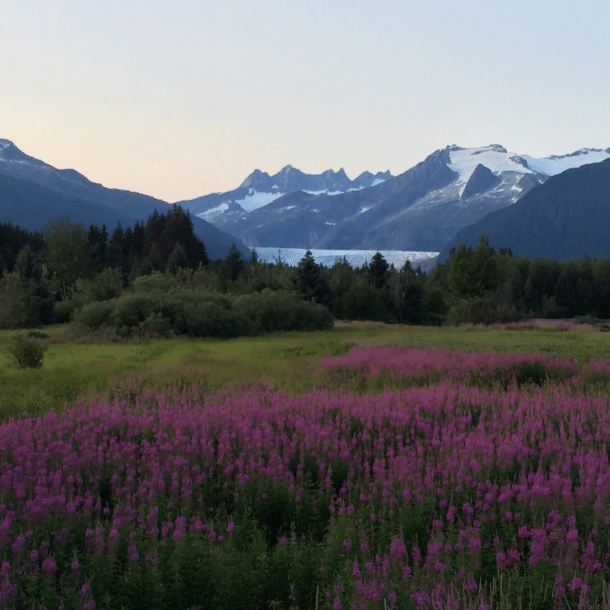While much of the U.S. is under a blanket of snow, southern Arizona’s state parks are at their finest: not too hot, not too cold, and road-trip ready. Hiking, biking, boating, fishing, and equestrian adventures await in one of the most unique corners of the Southwest. Springtime wildflower and cactus blooms sweeten the deal, whether you’re looking for all-day excursion or a relaxing day on the water.
This story was created in partnership with Arizona State Parks and Trails.
Picacho Peak State Park
Just off of I-10 between Phoenix and Tucson, Picacho Peak seemingly rises out of nowhere, rising 1,500 above the desert flats and farmland below. This monolith is known not only for its prominence, but also for its historic significance. Prehistoric travelers used it as a landmark, and is the site of the westernmost battle of the Civil War. Nowadays, the park is better known for abundant wildflowers and excellent hiking opportunities. Easy and moderate trails wind their way around the lower flanks of the mountain, but the real draw is the summit. Two routes lead to the top, both of which culminate in a network of steel ladders and cables mounted on the rock. Neither route is for the faint of heart, but the panoramic view from the summit is worth the effort.
Catalina State Park
With nearly 1,000 saguaro cacti per acre, Catalina State Park makes a strong case to be the poster child of the Sonoran Desert. Winding through all those saguaros are miles of trails, beloved by hikers, mountain bikers, and equestrians alike. One of the most unique features of the park is also one of the easiest to access: the remains of a prehistoric Hohokam village. A .75-mile trail leads to the Romero Ruins, with interpretive signs educating visitors about the region’s earliest inhabitants. More strenuous trails lead into the Santa Catalina Mountains, such as the Romero Canyon Trail, which is distinguished by a series of seasonal pools.
Oracle State Park
This 4,000 acre wildlife refuge offers 24 miles of hiking, biking, and equestrian trails, including a segment of the Arizona National Scenic Trail. What sets this park apart, however, is what happens after dark. Though the park is officially day-use only, its remote location has earned it recognition as a designated International Dark Sky Park. The park hosts star parties throughout the year, where visitors can view the Milky Way and peer at distant stars and planets through telescopes. Access after-hours is also granted by request by contacting the park office and making a reservation.
Patagonia Lake State Park
Anywhere you find an abundance of water in the desert, you’re bound to find wildlife as well. This 250-acre lake is a respite not only for fishermen, campers, and boaters, but a diverse array of critters. Javelina, coatimundi, whitetail deer, and bobcats frequent the shores in search of water and shade, along with a wide range of birds. A half-mile trail leads to Sonoita Creek, which offers some of the best opportunities for bird watchers. Overnight options of course include tent and RV camping, but if you’re looking for more creature comforts, fully-furnished, air-conditioned cabins are available as well.
Kartchner Caverns State Park
Discovered in 1974 by Gary Tenen and Randy Tufts, it didn’t take long to realize that this extensive cave network with rare rock formations needed to be protected. The location was kept secret by the spelunking partners and the landowners, the Kartchner family, until its protection was guaranteed by Arizona State Parks, which acquired it in 1988. It wasn’t until 1999, however, that it was finally ready to open to the public. Thanks to decades of hard work and trust, visitors can now take guided tours through the caverns. Many of the rock formations have taken thousands of years to get where they are today, including stalactites over 20 feet long. The cave is also home to bats, who exit each evening during the summer to feed on insects. Reservations are strongly encouraged, so be sure to plan ahead for your spring visit to Arizona’s state parks this year.

